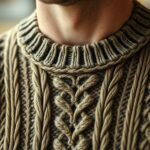You’re about to find out the secret to getting the most from your Oura ring. It’s not what you think – it’s all about the finger you choose. Don’t assume it’s just about comfort, think again. Your finger choice can make or break the accuracy of your data.
Choosing the Right Finger for Optimal Performance
When you’re getting ready to wear an Oura Ring, choosing the right finger is pivotal – it’s not just about aesthetics, it’s about getting accurate readings. You’ll want to ponder the finger dexterity impact, as some fingers are more prone to movement. The fine motor skills influence is also key, so pick a finger that’s not too active.
Don’t choose a finger that’s always typing or texting, as this can affect the ring’s accuracy. Be honest with yourself – if you’re a heavy phone user, your index finger mightn’t be the best choice. Contemplate your daily habits. Additionally, consider the occasion when selecting your finger, as different activities may influence how the ring performs.
Factors to Consider When Selecting a Finger
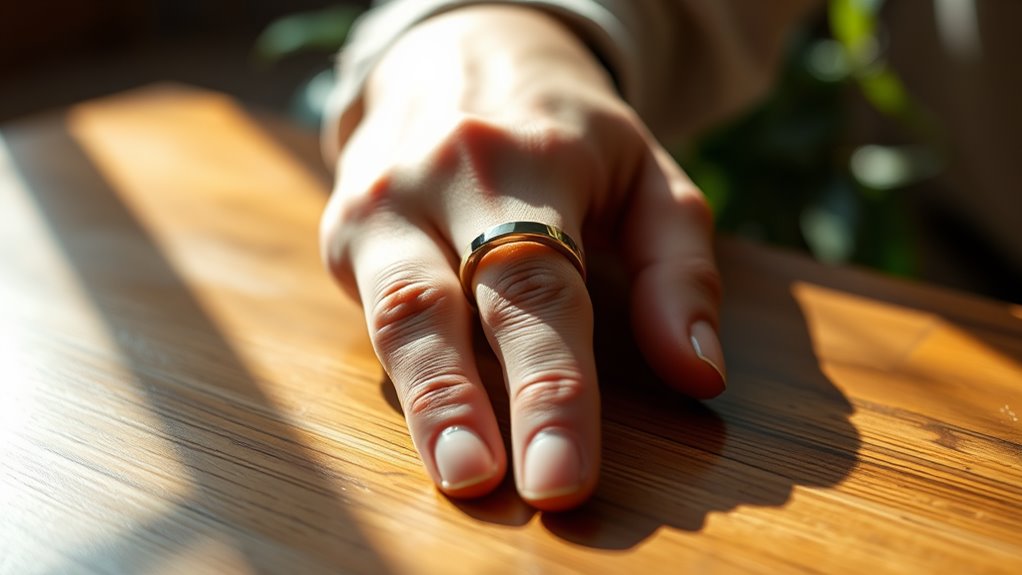
As you’re figuring out which finger to wear your Oura Ring on, it’s vital to mull over a few key factors that’ll impact its performance. You’ll want to ponder finger size variations – a ring that’s too tight or loose won’t give you accurate readings.
Environmental factors influence your ring’s performance too, so think about your daily activities and how they might affect the ring. Don’t wear it on a finger that’s constantly exposed to water or harsh chemicals.
Be honest with yourself – if you work with your hands a lot, some fingers are better than others. Choose wisely. Additionally, consider how wearing your ring on different fingers may affect its performance readings, as this is crucial for accurate health tracking.
Understanding Oura Ring Sensor Technology
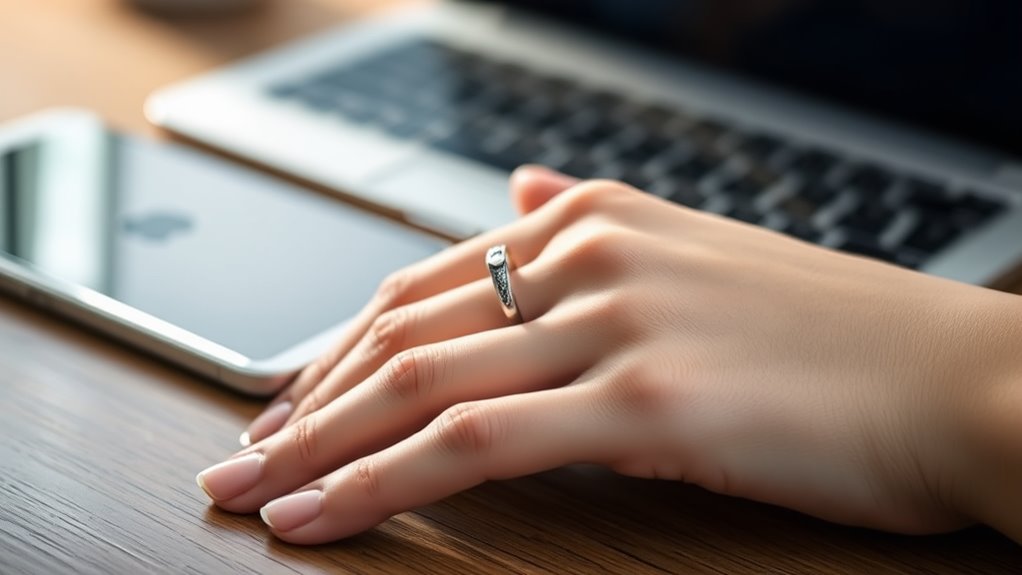
You’re about to plunge into the world of Oura Ring sensor technology, and it’s pretty cool stuff. You’ll uncover that sensor accuracy is key to getting reliable data. Sensor positioning is pivotal, too – it can make or break the accuracy of your readings.
Don’t expect it to be perfect, though – no sensor is 100% accurate. You’ll need to find a balance between comfort and sensor accuracy. Experiment with different placements to find what works best for you. It’s not rocket science, but it does require some trial and error. Prepare to tweak and adjust for ideal results.
Benefits of Wearing the Oura Ring on a Specific Finger

Wearing the Oura Ring on a specific finger can make a huge difference in the accuracy of your readings – it’s not just about slapping it on any old finger. You’ll get better results when you consider hand temperature regulation and blood flow optimization.
Improved sensor accuracy
Boosted data collection
Better sleep tracking
Increased motivation
Choose a finger that helps you get the most out of your Oura Ring, it’s that simple. Additionally, wearing the ring on the right finger can also enhance your overall comfort during daily activities.
Common Mistakes to Avoid When Wearing the Oura Ring
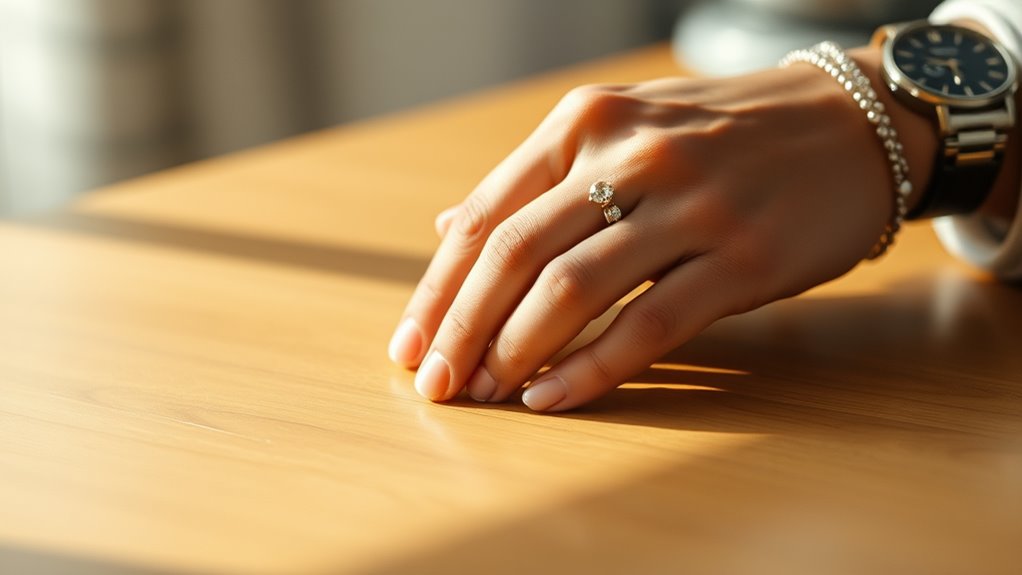
Your Oura Ring’s accuracy depends on how you wear it, and let’s face it, it’s easy to mess up. You’ll want to avoid an incorrect size selection, as it can affect the ring’s performance.
Improper ring rotation is another mistake – it can lead to inaccurate readings. Don’t wear it too loose or too tight, as this can also impact accuracy.
You’re investing in this ring to track your health, so take the time to get it right. Double-check the fit and make sure it’s comfortable, but not too comfortable that you forget it’s there. Get it just right. Additionally, ensure that the ring is positioned correctly on the finger to maintain proper ring rotation, which is crucial for accurate health tracking.
Everyday Practicality and Comfort Considerations

Getting the fit right is just the start – now it’s time to think about how the Oura Ring fits into your daily life. You want ease of access and a discreet appearance. Consider the following:
Getting the fit right is just the start of seamlessly integrating the Oura Ring into daily life.
- Daily activities
- Sleep comfort
- Hygiene habits
- Personal style. You’ll wear the ring 24/7, so it’s essential to choose a finger that works with your lifestyle, not against it. Think about what you do daily and how the ring will impact that. Additionally, consider how the laid-back atmosphere of your environment might influence your choice of finger for a more comfortable fit.
Expert Recommendations for Oura Ring Placement
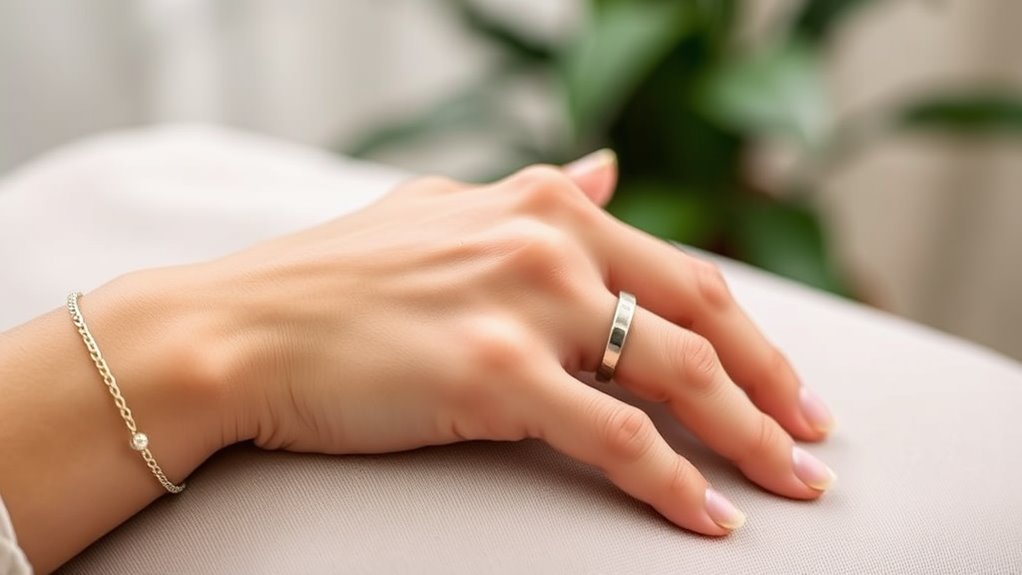
Someone’s bound to tell you that the Oura Ring can go on any finger, but let’s get real – that’s not entirely true. You need proper ring placement guidance to get accurate data.
Experts say you should wear it on a finger that doesn’t get in the way. Your index finger or thumb aren’t ideal, as they’re often used for daily tasks. Sensor calibration needs are vital, so choose a finger that’s not too active. This guarantees you get the most out of your Oura Ring.
Consider wearing it on your middle or ring finger for the best results. Additionally, wearing it on a finger that allows for accurate data collection can significantly improve your experience with the device.


